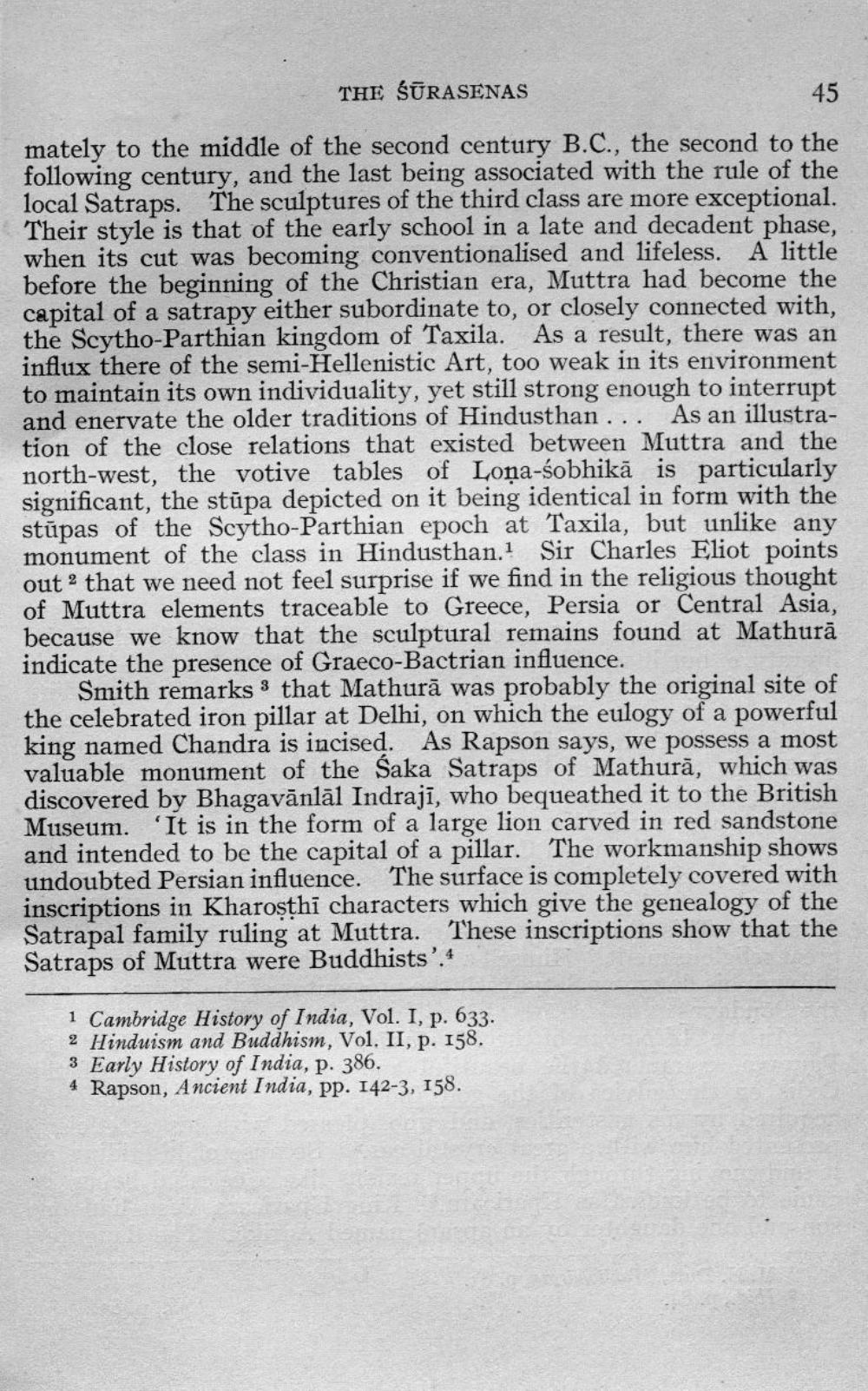________________
THE ŚŪRASENAS
45 mately to the middle of the second century B.C., the second to the following century, and the last being associated with the rule of the local Satraps. The sculptures of the third class are more exceptional. Their style is that of the early school in a late and decadent phase, when its cut was becoming conventionalised and lifeless. A little before the beginning of the Christian era, Muttra had become the capital of a satrapy either subordinate to, or closely connected with, the Scytho-Parthian kingdom of Taxila. As a result, there was an influx there of the semi-Hellenistic Art, too weak in its environment to maintain its own individuality, yet still strong enough to interrupt and enervate the older traditions of Hindusthan ... As an illustration of the close relations that existed between Muttra and the north-west, the votive tables of Loņa-sobhikā is particularly significant, the stūpa depicted on it being identical in form with the stūpas of the Scytho-Parthian epoch at Taxila, but unlike any monument of the class in Hindusthan.! Sir Charles Eliot points out 2 that we need not feel surprise if we find in the religious thought of Muttra elements traceable to Greece, Persia or Central Asia, because we know that the sculptural remains found at Mathurā indicate the presence of Graeco-Bactrian influence.
Smith remarks s that Mathurā was probably the original site of the celebrated iron pillar at Delhi, on which the eulogy of a powerful king named Chandra is incised. As Rapson says, we possess a most valuable monument of the Saka Satraps of Mathurā, which was discovered by Bhagavānlal Indraji, who bequeathed it to the British Museum. It is in the form of a large lion carved in red sandstone and intended to be the capital of a pillar. The workmanship shows undoubted Persian influence. The surface is completely covered with inscriptions in Kharosthi characters which give the genealogy of the Satrapal family ruling at Muttra. These inscriptions show that the Satraps of Muttra were Buddhists'.4
i Cambridge History of India, Vol. I, p. 633. 2 Hinduism and Buddhism, Vol. II, p. 158. 3 Early History of India, p. 386. 4 Rapson, Ancient India, pp. 142-3, 158.




